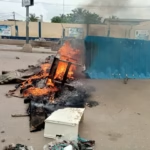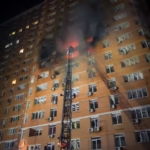Hazard Insurance is a term often used by lenders to protect their collateral — aka their homes. Moreover, it is not a standalone policy but bundled with a home insurance policy most times. It covers the structure of the home from damages caused by various manmade or natural circumstances.
Therefore, it is advisable to understand and mention all possible coverages in the policy to protect your lifetime investment. For this, compare personalized quotes from the best Alberta home insurance brokers at a reputable brokerage, like Surex. Also, do your research before inking any contract.
This guide simplifies the difference between home insurance vs hazard insurance and what they cover.
Home insurance vs hazard insurance: What is the difference?
When specifically mentioned, hazard insurance covers the structure of your house from any type of man-made or natural damage such as fire, hailstorm, fire, or other natural events. However, it doesn’t cover the elements or content within the house.
Whereas comprehensive homeowner’s insurance covers both property and contents (living and non-living) within the house. To put it simply, hazard insurance is a subsection of your homeowner’s insurance that protects the structure of your house from specifically mentioned events. So, it is neither separate insurance nor you have to purchase it separately.
The term hazard insurance is almost exclusively used by lenders while offering a mortgage. Lenders insist specifically on hazard insurance as it covers their investment. However, a complete homeowners insurance package can satisfy their demand as it also includes hazard insurance.
| Hazard Insurance | Homeowners Insurance | |
| Coverage | It protects the house’s structure from damages caused by man-made or natural events. | Covers damage to the house, personal belongings, and liability-related expenses. |
| When can you use it? | In case of damage to the house due to a covered peril. | Damage or theft, personal property loss, or any legal obligation to pay for injury caused to anyone on your property. |
| How to purchase it? | Hazard insurance comes in a bundle with your homeowner’s insurance policy. | You must purchase it from the insurance company, broker, or an independent agent. |
What is hazard insurance?
Technically, hazard insurance is not a standalone policy. Instead, it is a part of a homeowners insurance policy that protects the home itself. It provides coverage to the house from hazardous occurrences explicitly mentioned in the policy. Therefore, policyholders should clearly understand what is covered or is not by their homeowner’s insurance.
Hazard insurance covers your house from damages caused by the following hazards:
- Damages from hailstorms, thunderstorms, or lightning
- Fire and smoke
- Vandalism or theft
- Explosions
- Damages caused by electric wiring or appliances
- Other natural causes such as damage due to falling trees
Specifically mentioned hazards in an insurance policy are listed under “named perils.” Insurers only provide coverage to the named perils in the policy. Policyholders have the freedom to add any specific hazard according to their need to the peril list. However, you may have to shell out additional costs for this extra coverage.
What is homeowners insurance?
A homeowner insurance policy covers both structure and content of the house from damages or loss caused to a variety of reasons. It covers structure, land, and personal property. Homeowners have the option to extend the coverage to jewelry, antiques, or other precious belongings at extra costs. Similarly, to avoid legal actions arising due to the injury of any person on their property, policyholders can add liability coverage.
As evident, homeowners insurance also covers the structure of the house, which means you don’t need separate hazard insurance. Homeowners insurance offers:
- Dwelling coverage protects the structure of your house
- Coverage for additional free-standing structures (like a garage)
- Personal property coverage
- Loss of use coverage
- Personal liability coverage
- Medical payments coverage
Home Insurance and Hazard Insurance: What do they not cover?
By now, It is clear that hazard insurance is part of homeowners insurance that covers the home from certain hazardous occurrences. Although homeowners insurance (including hazard insurance) provides coverage for damages caused by a variety of occurrences, it doesn’t provide coverage for the following:
- Flood-related damage, as separate flood insurance policies are available.
- It does not cover natural disasters such as earthquakes and landslides. You have additional catastrophic policies to cover your home in these cases.
- Damages caused to the structure of the house due to carelessness or fault on the part of a homeowner. It includes non-maintenance of the property and using faulty appliances. For instance, damages caused by flooding due to clogged gutters are not covered.
- Personal belongings such as cars are already covered by separate insurance. So, such items are also not covered by homeowners insurance.
Hazard Insurance Vs Home Insurance: Cost
The good news is there is no additional charge for hazard insurance. It is an integral part of your homeowner’s insurance. The average cost of homeowners insurance in Canada stands at $960. However, certain aspects may affect the cost of your homeowner’s insurance, such as:
- Whether you choose a fair market value or replacement cost of your home and belongings
- Your net worth
- The selection between premium and deductible costs.
Furthermore, a good credit score and security features of your home can help you get a discount on homeowners insurance.
Is hazard insurance required?
Yes, if you own a house. People who want to qualify for a mortgage also need to buy a homeowners insurance policy. It covers both the structural (hazard insurance) and belongings of the house. In case of any loss or damage, it provides great financial relief. But, keep in mind that you need not purchase separate hazard insurance. It comes with your homeowner’s insurance.
Final thoughts regarding home insurance vs hazard insurance in Canada
It is now clear that homeowners insurance and hazard insurance go hand in hand. Homeowners should read under the fine print to understand the type and extent of coverage provided by their policy.
Depending on the area where you live, you may have to buy additional insurance coverage to protect your home against certain natural events like floods or landslides. It is advisable to shop around and compare home insurance quotes to get the best rates and coverage.













